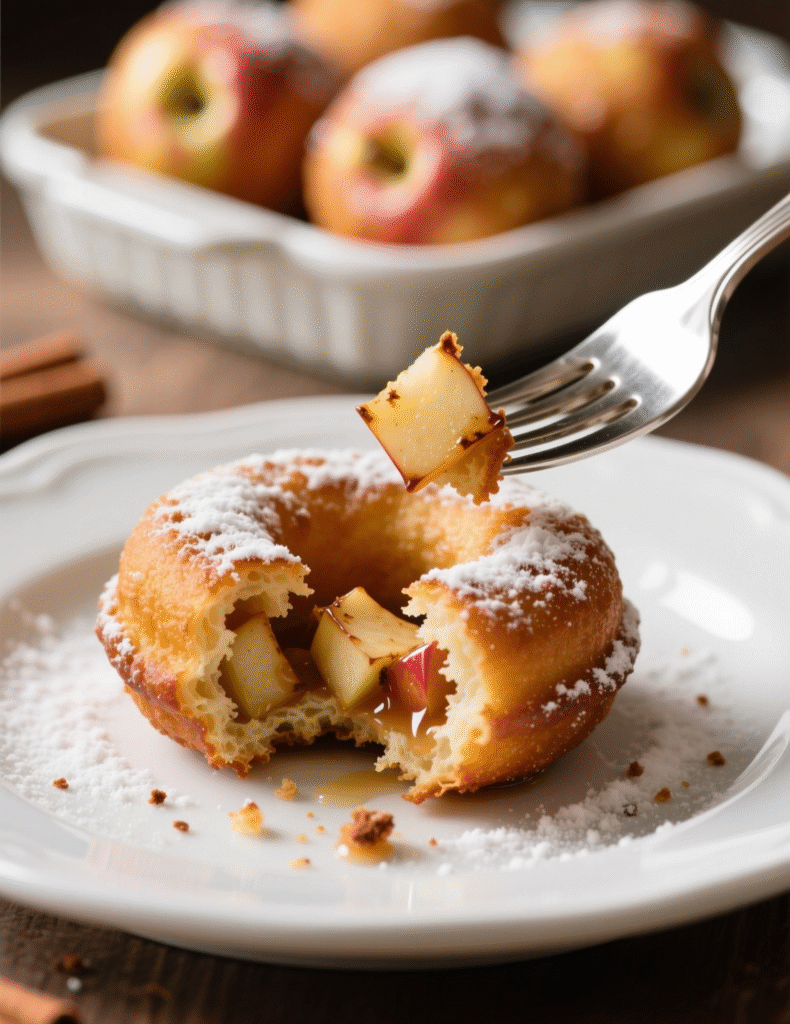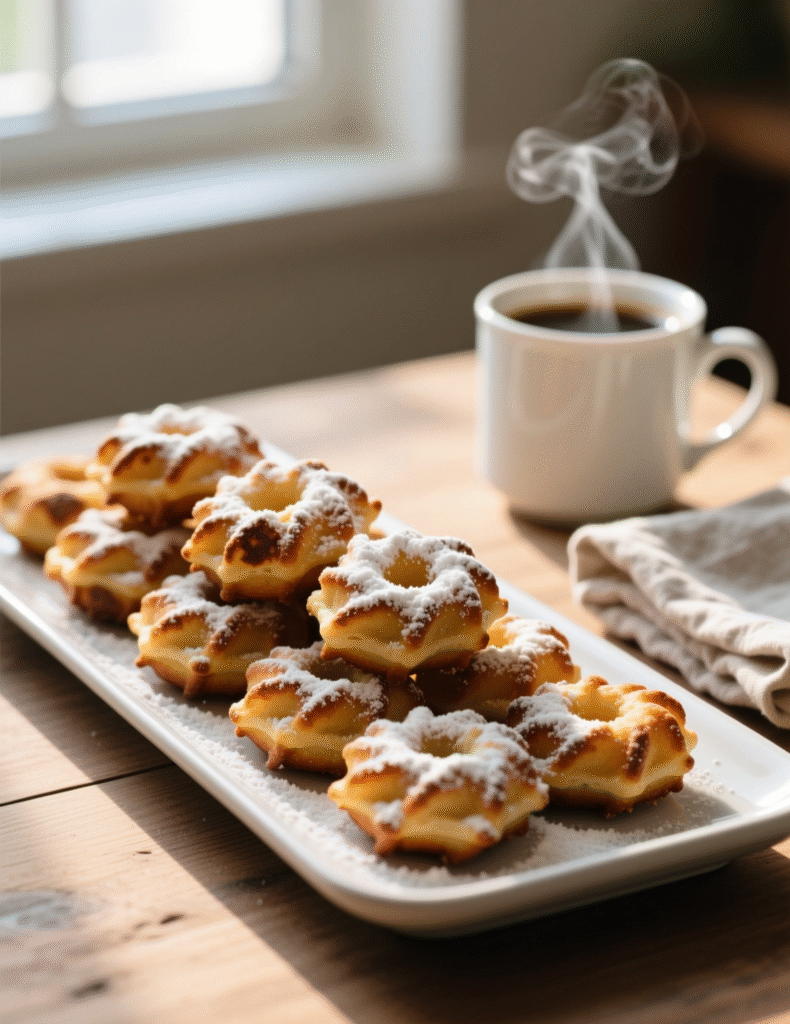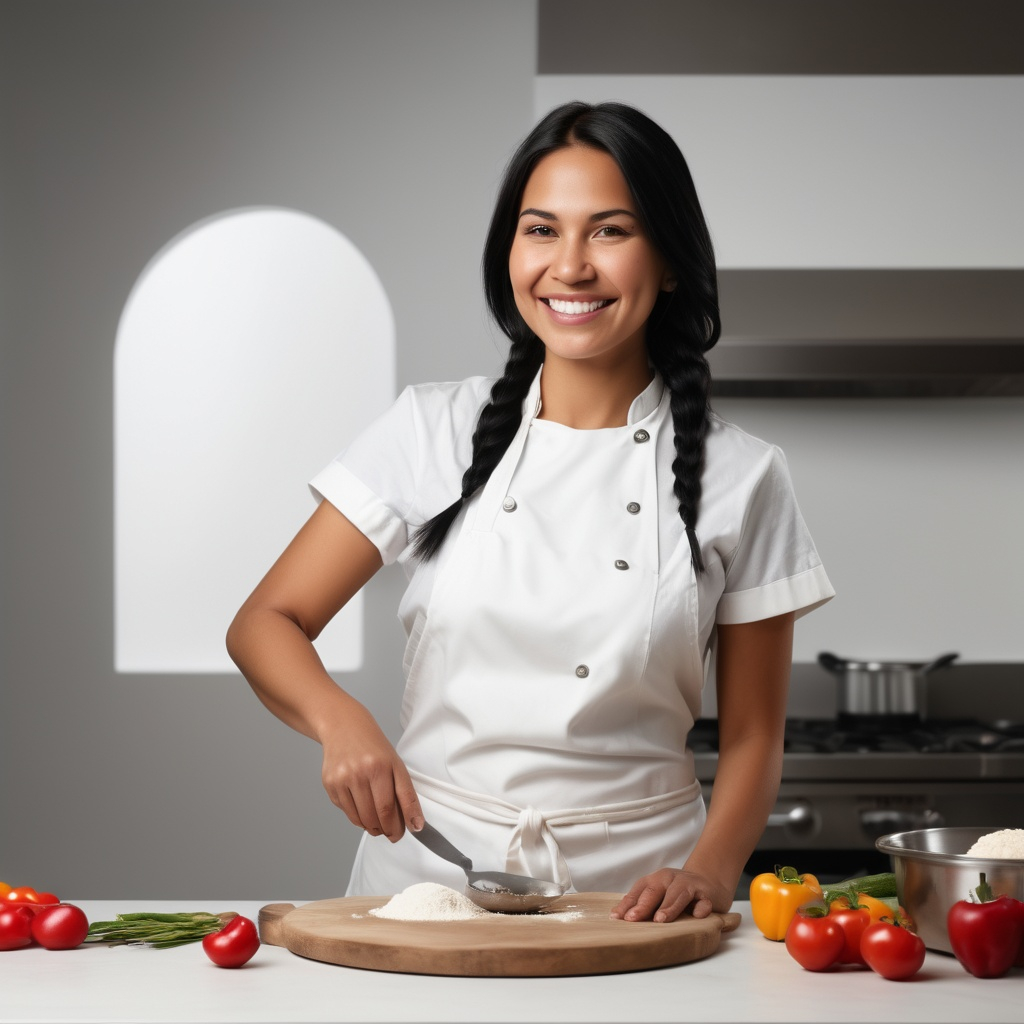There’s something rather bold about biting into a cinnamon apple fritter when it’s still slightly warm, the glaze dripping down the sides, the scent of fried dough mixed with caramelized apples wrapping around you like a wool coat in November. This recipe for Easy Cinnamon Apple Fritters isn’t just another dessert you scroll past. It’s a study in contrasts—soft fruit against crisp dough, warmth of spice against a sugary kiss. And yes, though we call it “easy,” this dish still holds layers of technique that professional cooks can’t help but obsess over.
These fritters aren’t just tasty sweets. They tell a small culinary story about how simple pantry staples—flour, sugar, cinnamon, apples—become more than their parts when treated right. And that’s the whole point here: mastery doesn’t always demand extravagance, sometimes it lives in knowing exactly how long to rest a batter or the precise moment to lift something from hot oil.
Why Apple Fritters Deserve Professional Respect
Pastry chefs often treat fritters as rustic, casual pastries, yet in truth they require technical control on par with laminated doughs or custards. Think of oil temperature. Just 10 degrees too high, and your fritters go from golden to bitter-brown faster than you can blink. Too low, and you get greasy lumps instead of crisp edges. These are small margins, but they separate amateurs from professionals.
The fritter also balances moisture better than most fried sweets. Apples release juice, cinnamon brings volatile oils, and the batter must carry them all without collapsing. That’s why this recipe matters—because it demonstrates how to work with food that doesn’t naturally want to behave.
The Star Ingredient: Apples
The apple is both hero and troublemaker here. Choose poorly, and you’re left with mush or flavorless chunks. Choose wisely, and you get sweet-tart pockets that lift the whole bite. In professional kitchens, Granny Smith or Honeycrisp dominate for fritters. Granny Smith because they hold shape and offer acid balance. Honeycrisp because they’re juicy but not watery, sweet but not cloying.
Here’s a tip many miss: dice apples into uneven sizes. Some small, almost melting into the batter, and others larger, giving real bite. This creates contrast, a little surprise with every chew. A uniform dice? Too predictable. Pastry should flirt with the unexpected.

Cinnamon Isn’t Just Background
Cinnamon is one of the most misused spices in baking. People throw it in without thought, like salt on French fries. But cinnamon is a volatile spice. Its essential oils degrade quickly when exposed to air. That means buying ground cinnamon in bulk is like pouring wine and leaving the bottle open for weeks. Professionals often grind their own sticks fresh, or at least buy small amounts regularly.
And don’t overlook varieties. Ceylon cinnamon has delicate floral notes. Cassia (the one most common in supermarkets) brings heat and punch. For fritters, cassia’s strength cuts through the oil and sugar better. It doesn’t get lost.
Technique First: Mixing the Batter
The batter here is closer to a cake batter than a yeasted dough. That’s intentional—ease, but also precision. Flour, sugar, eggs, baking powder, milk. Simple, but fragile. Overmix, and gluten development turns fritters tough. Undermix, and dry flour streaks ruin the texture.
The trick? Whisk the dry separately. Whisk the wet separately. Then fold them together just until combined, no more. Think of it as a handshake—firm, quick, no lingering.
Another small note: a short rest of 5–10 minutes before frying lets the flour hydrate and the batter relax. This isn’t written into most home recipes because people are impatient. But those extra minutes? They make the interior more tender. Professionals wait.
Frying: The Point of No Return
Oil temperature is king. You’re aiming at 350°F (175°C). And not just “about that.” You need accuracy. A candy thermometer clipped to the side of the pot is your best friend. Every fritter dropped lowers the temperature slightly. Too many at once, and you’re in the danger zone of soggy fritters. Fry in small batches—four fritters at most in a medium pot.
Color tells you truth more than the clock. You’re looking for a rich golden-brown, not pale beige, not dark chestnut. On average, fritters fry 2–3 minutes per side. But watch, don’t just time. Food speaks, if you let it.
The Glaze: Simplicity That Works Hard
Powdered sugar, milk, vanilla. It looks almost laughably plain, but the glaze plays a crucial role. It locks in moisture, adds sweetness, and creates that glossy finish we associate with bakery fritters. Professionals whisk the glaze until smooth, then dip the warm fritters once, letting excess drip off on a rack. The heat slightly sets the glaze so it doesn’t run.
Want a professional edge? Add a pinch of salt to the glaze. It sharpens flavor, pulling cinnamon and apple into focus. Or substitute part of the milk with apple cider for deeper fruit notes.
Easy Cinnamon Apple Fritters Recipe (8 Servings)
Ingredients
- 2 large apples (Granny Smith or Honeycrisp), peeled, cored, diced
- 1 cup all-purpose flour
- ¼ cup granulated sugar
- 1½ tsp baking powder
- 1 tsp ground cinnamon (preferably fresh)
- ¼ tsp salt
- ⅓ cup whole milk
- 1 large egg
- ½ tsp vanilla extract
- Oil for frying (canola or peanut, 2–3 cups depending on pot size)
Glaze
- 1 cup powdered sugar
- 2 tbsp milk (or apple cider)
- ½ tsp vanilla extract
- Small pinch of salt
Method
- In one bowl, whisk flour, sugar, baking powder, cinnamon, and salt.
- In another, whisk milk, egg, and vanilla.
- Fold wet into dry until just combined. Fold in apples.
- Heat oil in a heavy pot to 350°F.
- Drop batter by heaping tablespoons, frying 2–3 minutes per side. Don’t crowd.
- Drain on paper towels or rack.
- Whisk glaze ingredients until smooth. Dip fritters while still warm. Let glaze set slightly before serving.
This yields about 8 fritters, depending on size. They’re best eaten the day they’re made, ideally within the first two hours. After that, texture changes, glaze softens, and magic fades.

A Professional’s Troubleshooting Notes
Fritters greasy? Oil was too cold.
Fritters raw inside? Oil too hot or fritters too big.
Glaze sliding off? Fritters were too hot or glaze too thin.
Apples soggy? Likely too ripe, or batter sat too long before frying.
Every issue teaches you something. Professionals don’t treat mistakes as failure but as calibration.
Trends and Variations
Across bakeries, apple fritters have become a canvas for reinvention. Some add caramel drizzle. Others fold in chopped nuts—pecans or walnuts—to play against the soft fruit. Gluten-free versions use rice flour with xanthan gum for structure. Air fryer versions exist, though they lack the same crispness of oil frying. Still, they reflect where consumer demand is heading: lighter, “healthier” interpretations.
Interestingly, research from IBISWorld shows U.S. donut and fritter sales reached over $7 billion annually, with “classic flavors” still outselling gourmet twists. Cinnamon apple fritters sit comfortably in that sweet spot—nostalgia with just enough sophistication to feel modern.
Answering Common Misconceptions
One misconception: fritters are donuts. They’re not. Donuts are shaped doughs; fritters are irregular drops, carrying inclusions like fruit or veg. Another misconception: you can store fritters for days. Truth? You can, but you shouldn’t. They stale fast, and refrigeration kills texture. If necessary, rewarm in a 350°F oven for 5–7 minutes, but even then, the original crispness is gone.
Final Thoughts
Easy cinnamon apple fritters may appear humble, but they’re a professional’s playground of technique. They demand precision in batter mixing, sharpness in spice selection, and absolute control over frying. And when you nail them, they become more than dessert—they’re edible proof that mastery hides in the simplest dishes.
If you’re a chef, push them further. Play with spice blends—nutmeg, cardamom, clove. Try brown butter in the glaze. Test cider reductions. But never forget, the best fritters still live in that moment when they’re warm in your hand, slightly imperfect, and too good not to eat right away.
FAQs
Can I use any type of apple for fritters?
Granny Smith or Honeycrisp work best because they hold shape and balance sweetness with tartness.
Why is my apple fritter greasy?
The oil was too cold, causing the fritter to absorb excess oil instead of frying properly.
Can I make apple fritters ahead of time?
They’re best eaten fresh, but you can rewarm them in the oven though texture won’t be the same.
How do I keep the glaze from sliding off?
Glaze fritters when warm, not hot, and make sure the glaze is slightly thick.
What oil is best for frying fritters?
Neutral oils like canola or peanut work best since they don’t overpower the flavors.
Can I bake apple fritters instead of frying?
Yes, but the texture won’t be as crisp and traditional as fried ones.
Why are my fritters raw in the middle?
Either the oil was too hot or the fritters were dropped too large in size.
How long do apple fritters stay fresh?
Ideally, eat within 2 hours, though they last about a day at room temperature.
Can I freeze apple fritters?
Yes, but reheating changes the texture, so fresh is always better.
What makes these fritters “easy”?
The batter uses simple pantry ingredients and doesn’t require yeast or long resting time.

Marie Smith is a passionate recipe blogger, sharing easy, delicious, and creative culinary ideas that inspire home cooks to elevate everyday meals with flavor and simplicity.
